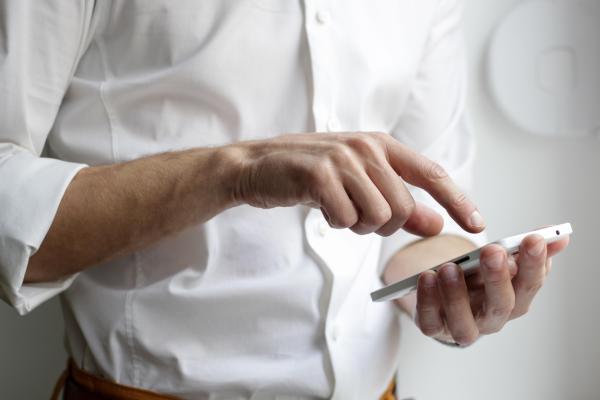The Ultimate Guide to Cleaning and Organizing Your Mobile Device
If one has spent more than a minute searching for apps scattered across their iPhone home screens, it may be worth considering organizing the device for easy access. With thousands of apps available, it's easy for screens to become overcrowded, making it difficult to find specific apps amidst a mishmash of colorful icons. This problem can be solved by dedicating 15 minutes to decluttering phones and finding a personalized organizational structure that suits the individual. It's important to avoid becoming an app hoarder.
How to clean up your phone?
#1 Delete Unused Apps
People often download apps only to realize they aren't as useful as expected or they become unnecessary over time. Just like cleaning and decluttering a home, removing unused apps from your phone will help keep it fast and organized.
Who has the time to search through a myriad of applications just to find the one they need? iPhone users can check their app usage in the settings section under battery usage to see how often they accessed an app within the last week. For Android users, installing an app usage tracker like QualityTime can provide similar insights.
#2 Backup Media
In order to ensure the safety of precious memories, it is recommended to back up photos and videos on mobile devices. One can easily do this by setting up automatic backups using Google Photos or iCloud, regardless of whether they have an Android or iPhone. On an iPhone, users should first ensure that iCloud is set up, then go to Settings > [your name] > iCloud > Photos, and enable iCloud Photos. For backing up the photo library on Google Photos, open the app and sign in to your Google Account.
#3 Smart Cleaning
There is a special application for smart cleaning iPhones. If you need to clean up more memory on your device then CleanUp: Storage Cleaner App for iPhone will help you organize your phone. CleanUp app looks for everything that is of no value to the user: duplicates, cookies, cache, downloads, data in messengers, etc. Deleting this data boosts your phone and frees up a lot of space.
#4 Create Folders
Creating folders will assist in maintaining an organized home screen. Users can opt for multiple folders or a few, depending on their preferred organizational style. Folders can be categorized based on app usage or type, or any other system that is deemed helpful. This practice aids in preventing phone clutter and distractions. It is recommended to allocate time-consuming apps such as Facebook and Instagram into folders, in order to avoid them being the initial apps accessed on the phone. App icons can be moved into folders effortlessly through the hold and drag function.
#5 Organize Photos and Apps
When it comes to organizing iPhone apps, one can choose to color code them or arrange them based on categories. This approach not only enhances the phone's navigational ease but also adds to its aesthetic appeal. In terms of expert advice, Moore-Crispin suggests keeping the frequently used apps on the home screen for effortless access. To organize the apps, the user needs to press and hold a folder, which triggers vibrations, allowing for moving or renaming the folder. Creating a new folder is as simple as dragging one app onto another. Furthermore, apps or folders can be moved to another screen by holding them at the edge until the screen transitions.
#6 Embrace Streaming Music
Alongside photos and videos, music can also contribute significantly to occupying storage space on one's phone. If one has previously burned CDs or downloaded songs from online stores, it might be worth considering transferring those songs to a hard drive and subscribing to a streaming service instead. This approach allows users to continue enjoying their favorite songs while also exploring new music through personalized playlists and radio mixes. It is important to note that streaming services typically entail a monthly fee and consume data, thus users should consider their existing data usage before making a decision.
#7 Use Cloud Storage
To save memory on their phones, users can back up their information to the cloud. They should evaluate the areas of highest memory usage, typically photos, documents, music, and video files, and store them in a cloud service instead of on their phones.
Android users have options such as Dropbox, Amazon Drive, Microsoft OneDrive, and Google Drive (which may already be preloaded on their phones). iPhone users can also use iCloud or OneDrive. Google Drive for iOS and Dropbox are also available options for iPhone users.
Conclusion
Organizing your phone is an important part of staying productive and on top of tasks. It helps manage time by ensuring apps are easily accessible, and media that takes up space is stored elsewhere. By putting in a little effort to clean up the device and personalize its organizational structure, users can save time by quickly accessing what they need with minimal fuss.

